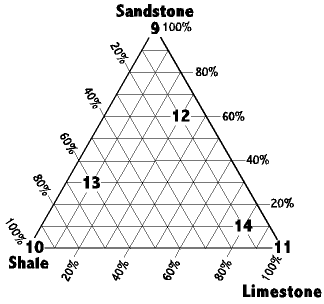
Phase Diagram Calculation Program
The algorithm has been implemented within a computer program that is general. Key words: phase diagram; pseudosection; rock properties; seismic velocity:.
Click on (pdf presentation - 53 pages) for detailed information on the Phase Diagram Module. Phase Diagram is a generalized module that permits one to calculate, plot and edit unary, binary, ternary and multicomponent phase diagram sections where the axes can be various combinations of T, P, V, composition, activity, chemical potential, etc. The resulting phase diagram is automatically plotted by the Figure module.
It is possible to calculate and plot: classical unary temperature versus pressure, binary temperature versus composition, and ternary isothermal isobaric Gibbs triangle phase diagrams; two-dimensional sections of a multi-component system where the axes are various combinations of T, P, composition, activity, chemical potential, etc.; predominance area diagrams (for example Pso 2 vs Po 2) of a multicomponent system (e.g. Cu-Fe-Ni-S-O) where the phases are real solutions such as mattes, slags and alloys; reciprocal salt phase diagrams; etc. The calculation of the binary temperature versus composition phase diagram for the CaO-SiO 2 system is shown in Figs.
2 and 3 In the Phase Diagram module the system components (CaO, SiO 2) are first entered in the Reactants Window (Fig. Then the type of phase diagram is defined in the Variables Window (Fig. 2 bottom) where the user selects the type of diagram (Y vs X, or Gibbs triangle), the type of axes (composition, activity and chemical potential), the possible composition variables, and the limits and constants of the phase diagram. Data from the compound and solution databases are offered as possible product phases in the Menu Window (Fig. In the case of CaO-SiO 2, the slag solution phase (FACT-SLAG) and all pure solids (including those outside the plane CaO-SiO 2) are selected as possible product phases. By clicking on the ‘Calculate >>’ button the phase diagram is automatically calculated and plotted in real time (Fig. When the calculation is complete the Figure module uses the graph as a dynamic interface.
By pointing to any domain, tie lines and stable phases are automatically labeled. Optionally the figure can be manipulated: tie lines can be inserted in the plot, the equilibrium compositions and phase amounts at any point on the diagram can be calculated and shown in a table, and the diagram can be edited (add experimental data points, text, change font and colors etc.). Examples of edited diagrams are shown later. The versatility of the choice of axes in the Variables Window enables one to generate many different types of phase diagrams.
A arte de enganar kevin mitnick download pdf. View and download Kevin_Mitnick_-_A_Arte_de_Enganar.pdf on DocDroid.
4 is a classical isothermal predominance area diagram for the Cu-SO 2-O 2 system. The system components are Cu, SO 2, O 2; the axis variables are log 10(Pso 2) and log ¨10(Po 2) and the temperature is set constant; the possible phases in the phase diagram are gas and stoichiometric solids taken from the FACT compound database.
This diagram may be compared to the one produced by the Predom module for the same system. Unlike the Predom module, Phase Diagram can produce predominance area diagrams that also include data from the solution databases. 5 shows the log 10(Po 2) vs Cr/(Cr+Fe) phase diagram at 1573 K where the system components are Fe, Cr and O 2. The possible phases are the gas and various real solutions taken from the FACT (oxides) and SGTE (alloys) databases. 6 is the input/output for an isopleth of T(C) vs TiO 2/(FeO+TiO 2) ratio at 50 mol% Fe in the FeO-TiO 2-Fe system again using both FACT and SGTE solution databases. An example of the interactive power of Phase Diagram is the equilibrium calculation shown in Fig.
7 where the user has first selected the phase equilibrium mode and then pointed and clicked at the coordinates 1450ºC and TiO2/(FeO+TiO 2) = 0.7. Note, these results would be identical to a calculation with the Equilib module at 1450ºC and 1 atm where the reactants are 0.7 TiO 2 + 0.3 FeO + excess Fe. 8 is the input/output for a Gibbs ternary section of the CaO–Al 2O 3–SiO 2 system at 1600ºC using FACT data.